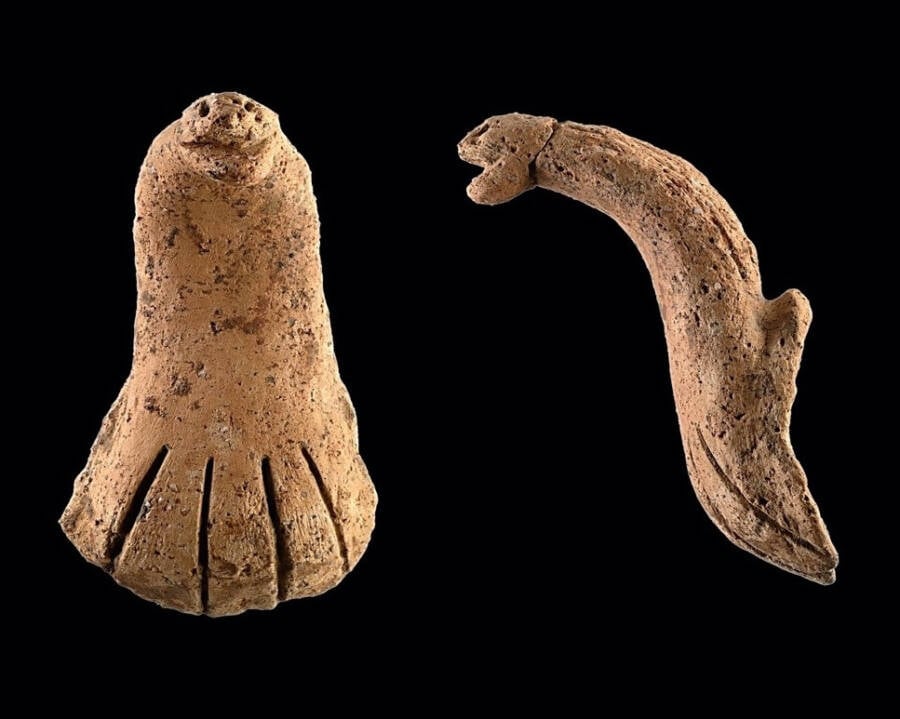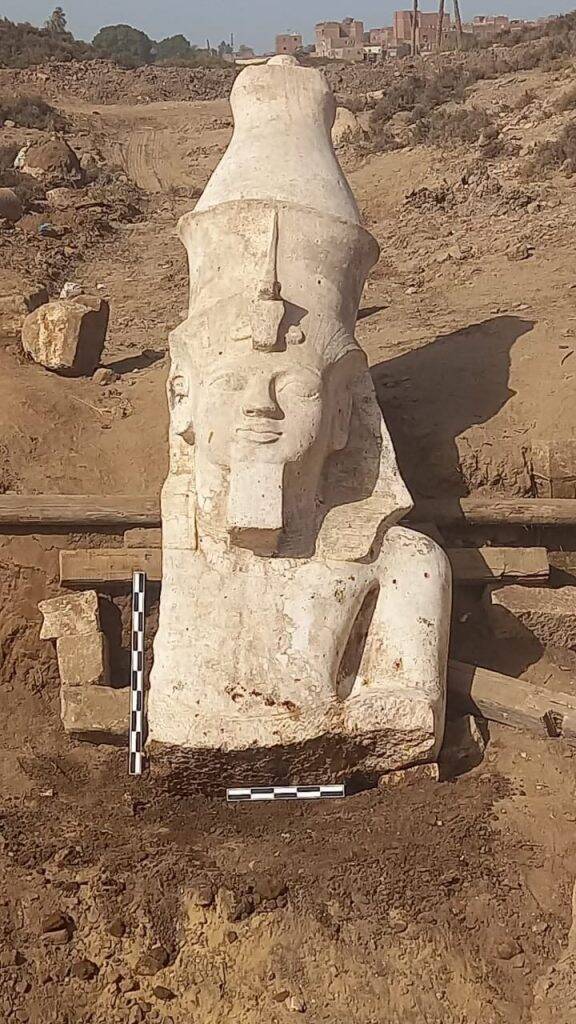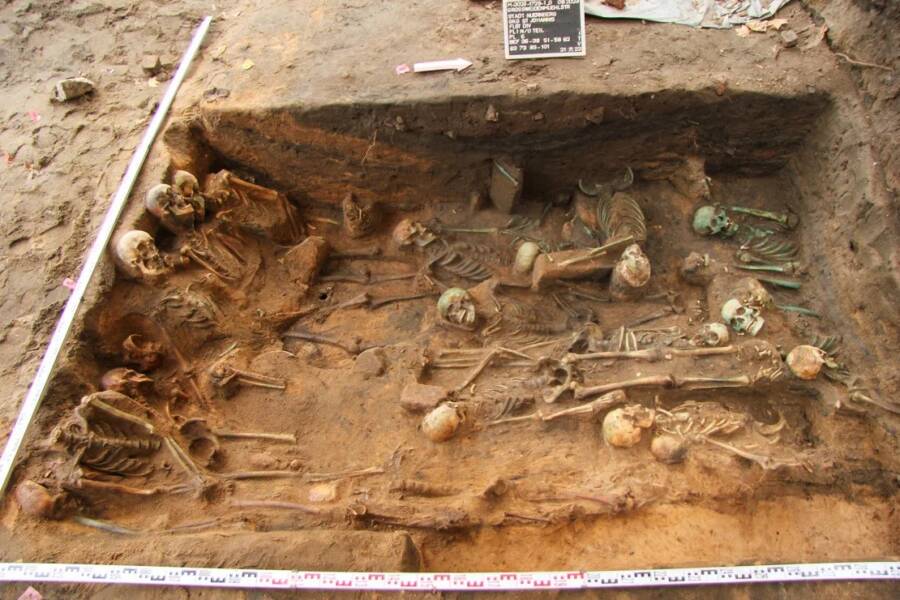Neolithic cobra pottery unearthed in Taiwan, missing half of Ramses II statue found in Egypt, mass grave filled with plague victims discovered in Germany.
Archaeologists In Taiwan Uncover 4,000-Year-Old Pottery In The Shape Of A Snake

National Tsing Hua UniversityArchaeologists believe the snake served as a handle for a vessel of some kind.
While digging in a sand dune in northern Taiwan, archaeologists uncovered a piece of pottery depicting a snake. Believed to be 4,000 years old, this rare relic shows a cobra about to strike.
Though experts aren’t sure what this artifact’s purpose was, they speculate that it might have been part of a ceremonial vessel used by Neolithic shamans.
See more here.
Missing Upper Half Of Massive Ramses II Statue Unearthed In Egypt

Egyptian Ministry of Tourism and AntiquitiesThe missing upper portion of a statue dedicated to Ramses II.
Nearly a century ago, the bottom half of a limestone statue of King Ramses II was unearthed in Egypt. Now, archaeologists have unearthed the missing upper half in Egypt’s Minya Governorate, finally restoring this ancient statue to its former glory.
The previously missing portion of the statue depicts Ramses II’s head, shoulders, and upper torso. He is shown wearing a double crown known as a pschent, signifying the ancient pharaoh’s dominion over Egypt, as well as a uraeus, a cobra headdress that represents the goddess Wadjet.
Dig deeper in this report.
Mass Grave With Over 1,000 Skeletons Discovered In The Center Of Nuremberg, Germany

In Terra VeritasThis mass grave of plague victims in Nuremberg, Germany contains the skeletons of hundreds of men, women, and children.
Prior to the construction of residential buildings in Nuremberg, Germany, archaeologists conducted a routine survey at the site. There, they made a gruesome discovery — the remains of over 1,000 people, probably plague victims, in what might be the largest mass grave ever discovered in Europe.
Experts are still examining the remains, but they believe that the victims perished during one of Nuremberg’s many brushes with the bubonic plague.
Read on here.





